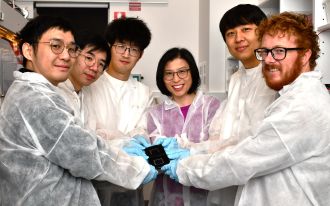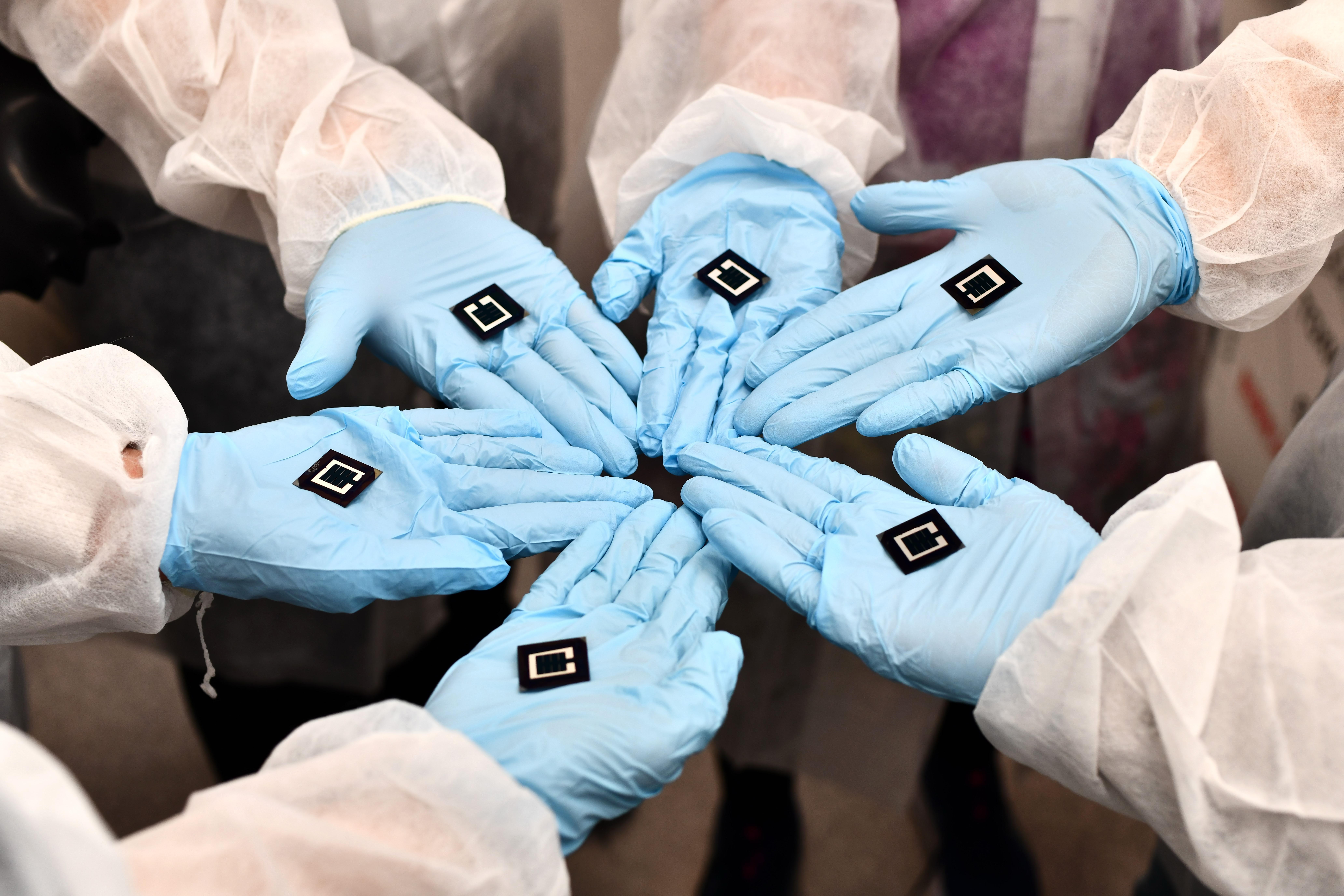Media release
From:
Led by Professor Anita Ho-Baillie, John Hooke Chair of Nanoscience at the University of Sydney Nano Institute and School of Physics, the result demonstrates high efficiency and durability, important steps for overcoming barriers to the development of perovskite tandem solar cell technology.
The team’s 16 cm2 triple-junction cell achieved an independently certified steady-state power conversion efficiency of 23.3 percent, the highest reported for a large-area device of this kind. At the smaller scale, a 1 cm2 cell recorded 27.06 percent efficiency and set new standards for thermal stability.
The results are published today in the high-impact journal Nature Nanotechnology.
In a global first, the 1 cm2 cell passed the International Electrotechnical Commission’s (IEC) Thermal Cycling test, which exposes devices to 200 cycles of extreme temperature swings between -40 and 85 degrees. This cell retained 95 percent of its efficiency after more than 400 hours of continuous operation under light.
A triple-junction solar cell uses three interconnected semiconductors, each absorbing a different part of the solar spectrum to maximise conversion of the Sun’s energy into electricity.
HOW THE TEAM DID IT
Professor Ho-Baillie, also part of the University of Sydney Net Zero Institute, said this latest advance was achieved by re-engineering the chemistry of the perovskite material and the triple junction cell design.
“We improved both the performance and the resilience of these solar cells,” she said. “This not only demonstrates that large, stable perovskite devices are possible but also shows the enormous potential for further efficiency gains.”
The researchers replaced less stable methylammonium, commonly used in high-efficiency perovskite cells, with rubidium creating a perovskite lattice that is less prone to defects and degradation. They also replaced the less stable lithium fluoride with piperazinium dichloride for a new surface treatment.
To connect the two perovskite junctions, the researchers used gold at the nanoscale and, using advanced transmission electron microscopy, clarified that gold at this scale is in the form of nanoparticles, not as a continuous film as many perceived. The team used this knowledge to engineer gold nanoparticle coverage to maximise the flow of electric charge and light absorption by the solar cell.
These developments enabled the triple-junction cell to sustain high efficiencies over more time and under stress.
FUTURE SOLAR ENERGY
Perovskites are an emerging class of photovoltaic materials valued for their low-cost manufacturing and ability to capture more of the solar spectrum when stacked in multiple layers with silicon. Until now, however, scaling devices beyond the laboratory and ensuring their stability under real-world conditions have been major challenges.
“This is the largest triple-junction perovskite device yet demonstrated and it has been rigorously tested and certified by independent laboratories,” Professor Ho-Baillie said. “That gives us further confidence that the technology can be scaled for practical use.”
The research was carried out in collaboration with international partners from China, Germany and Slovenia, with support from the Australian Renewable Energy Agency (ARENA) and the Australian Research Council.
The publication follows recognition of Professor Ho-Baillie’s leadership in solar research at the 2025 Australian Museum Eureka Prizes for Science, where she was awarded the Eureka Prize for Sustainability Research for her pioneering work on perovskite solar technology.
“It is an exciting time for solar research,” Professor Ho-Baillie said. “Perovskites are already showing us that we can push efficiencies beyond the limits of silicon alone. These advances mean we are moving closer to cheaper, more sustainable solar energy that will help power a low-carbon future.”
RESEARCH
Zheng, J. et al ‘Tailoring nanoscale interfaces for perovskite-perovskite-silicon triple-junction solar cells’ (Nature Nanotechnology 2025) DOI: 10.1038/s41565-025-02015-x
DECLARATION
The researchers declare no competing interests. Funding was received from the Australian Renewable Energy Agency, the National Natural Science Foundation of China, the Australian Research Council, Slovenian ARIS research program.
The authors acknowledge the scientific and technical assistance of the Research & Prototype Foundry Core Research Facility at the University of Sydney, part of the Australian National Fabrication Facility and Electron Microscopy Unit at UNSW.
Multimedia






 Australia; NSW; ACT
Australia; NSW; ACT


